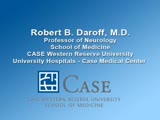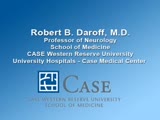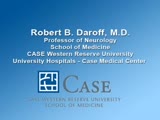The Robert B. Daroff Neuro-Ophthalmology Collection: Features a series of instructional video on eye movement disorders prepared in 1991. The original recordings were on 16mm film, mostly filmed in the 1960s and 70s in Dr. Daroff's laboratory at the University of Miami.
Robert B. Daroff, Professor and Chair Emeritus, School of Medicine, CASE Western Reserve University, University Hospitals - Case Medical Center.
NOVEL: https://novel.utah.edu/
TO
Filters: Collection: "ehsl_novel_rbd"
| Title | Description | Type | ||
|---|---|---|---|---|
| 51 |
 |
Eyelid Nystagmus | Lid nystagmus is of three types. The most common is associated with vertical ocular nystagmus with the lid movement being synchronous with the eyes, but with greater aplitutde. The second type is associated with gaze evoked horizontal nystagmus and may occur in the lateral medullary syndrome. A p... | Image/MovingImage |
| 52 |
 |
Superior Oblique Myokymia | This eye movement abnormality presents with intermittent monocular oscillopsia, often following a particular eye movement or head tilt. The examiner will often miss the abnormality unless it can be provoked. It represents a microtremor of a superior oblique muscle and usually responds to an anticon... | Image/MovingImage |
| 53 |
 |
Ocular Bobbing | This is characterized by an initial fast phase downward, followed by a slow phase up, which is the reverse of nystagmus, where a corrective fast phase follows the slow phase. Most patients with bobbing have a large pontine lesion and are comatose with paralyzed horizontal eye movements. The patien... | Image/MovingImage |
| 54 |
 |
Chiari Malformation: Eye Movements | The eye movement disorders commonly accompanying Chiari malformations are listed. These are generally the same as with lesions of the cerebellum. | Image/MovingImage |
